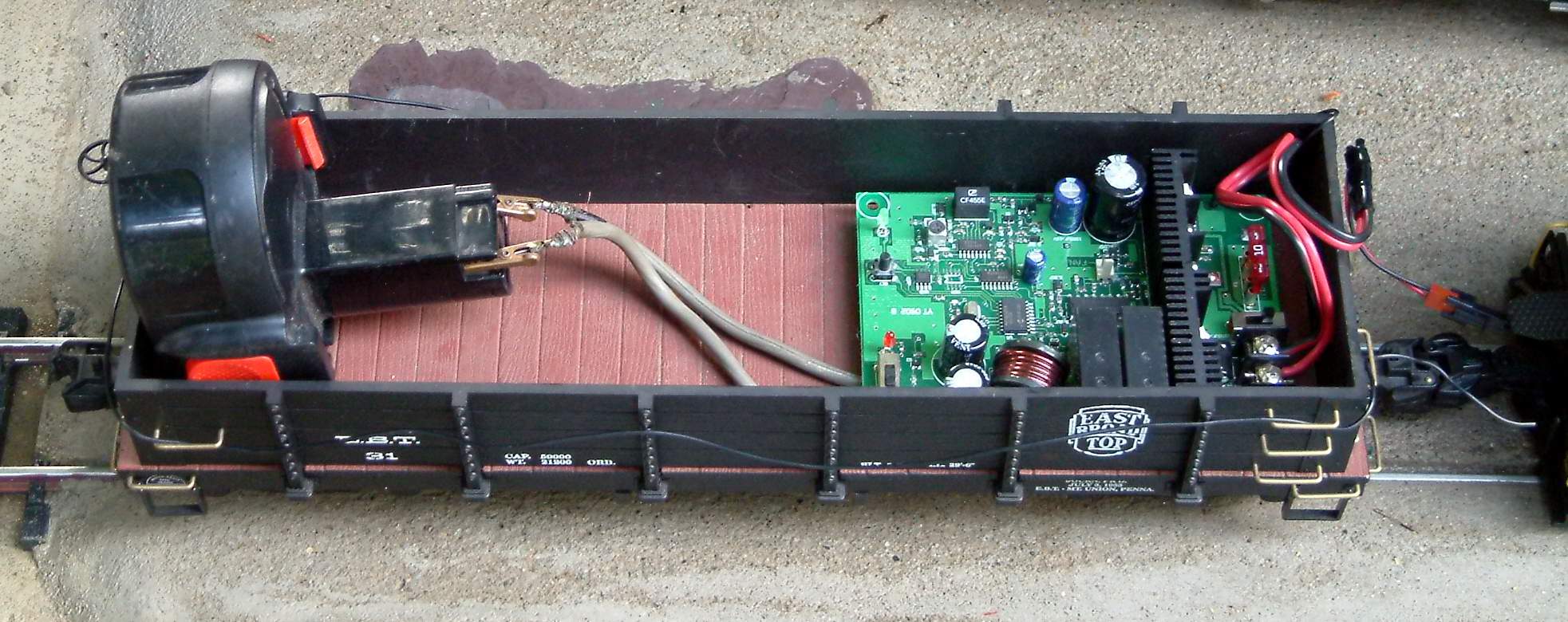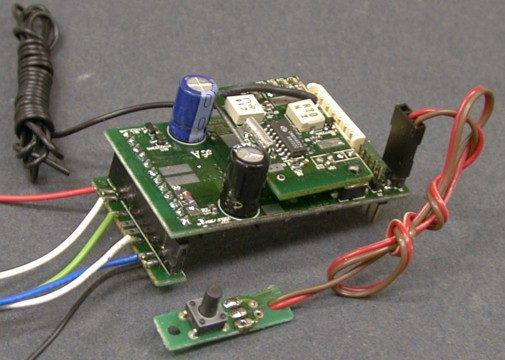Joe Rusz said:
Bad time for me to respond–after dinner and libations–but are we clear on the fact that I am not using track power? You guys mention the momentum setting, which I believe applies to that big, 10 amp power pack. I am using only the hand control thingy, which I believe is a transmitter, sending signals to the tender-mounted receiver. If there’s a way to adjust anything in that hand control device, I sure missed that class (my dog ate my homework). FYI, I am using probably an early Train Engineer controller, which has only two “Track Channels.” There are five other buttons, A-E, below the aforementioned speed and direction buttons. On my other, newer controller, which runs off track power, the A,B,C, etc. buttons control the whistle and bell, but because I don’t have that capability with this receiver, I believe in this case the alphabet buttons do nada.
Come to think of it, I don’t know how you could control momentum with battery power. With a battery, which is either all in or all off, the throttle buttons serve merely as crude step-like rheostats that gradually deliver more voltage and thus, more speed, right? Or am I missing something, which is entirely possible?
On the newer TEs, the momentum is programmed using the A-E buttons during the transmitter/receiver linking process. If you are using a TE receiver mounted in the tender using batteries, it is really no different than using it trackside to control the track voltage with a dc power pack. The momentum is built into the receiver regardless of where it gets its power.
That said, the older TEs do not have momentum, nor do they have a delay when going into reverse. The A-E are used to control other devices up to 5 volts.
There is also mention on George’s site that using a newer/older transmitter with an older/newer unit may result in some “flakey” operations.
From George Schreyer’s most excellent web site:
The DIN connector has 12 volts from a 7812 regulator, ground, and 5 function outputs which are normally low and go to 4-5 volts by depressing a-e keys and returning to ground when the key is released. There are 22k resistors in series with output so that they can not even drive an LED. A CMOS inverter chip and/or data latch are necessary to make use of these pins. An ART-5742 is designed to be connected to the DIN connector.
For reference, A is at 11:00, B at 9:00, C at 7:00, E at 5:00, 12 volts at 3:00, and ground at 1:00."
Also, Jon Miller writes in a post on MyLargeScale:
"I’ve had 4 of the 1st generation TE Receivers and 2 transmitters since May 1994. Two of the RX are used for track power, 2 are mounted in box cars and powered by battery. These units have been in constant service and I’ve never had a moments trouble with any of the components. There are still a good number of these 1st generation units in service in our club. When they first came out the 10 amp maximum rating was an issue. We finally got Aristo to admit that rating was a “momentary” rating. Fat lot of good that did! A number of us, after running operational tests, determined that the receiver was good for 5 amps continuous service. Anything above that load would cause the receiver to go into a shutdown mode. The train would still run, but very slowly and there was no response to the transmitter.
You will note from the documentation that comes with the unit that the receiver is polarity sensitive on the input. Also there is an internal fuse. I’ve never blown a fuse. When one blows it is a bear to get into the case to replace the fuse. Those that have had to replace the fuse end up installing an external fuse so if they have any further need to replace a fuse it becomes a simple matter. You will note there is no delay when going from forward to reverse. Also no momentum setting. Biggest problem is with the no delay when changing direction. You have to get in the habit of bringing the engine to a full stop before changing direction. A few changes in direction while running at speed will possibly destroy a set of drive gears, especially if pulling a heavy consist. I would also recommend that you add an in-line fuze between the receiver and the track. This will help protect the internal fuze and save the need to go into the receiver to change a fuze. The metal case acts as a big heat sink. Keep the receiver in a location that allows for air flow around the receiver in order to keep its operating temp. down.
The battery contacts in the transmitter are weak. If you drop it just right the weight of the batteries will collapse the contact springs and the transmitter will not function. George has a fix posted at his site should this problem come up.
The receiver will align with any of the later edition transmitters, including the latest version.
The ART 5472 accessory adaptor never did function as advertised. The ART 5474 Auxiliary Distribution Panel works ok but has limited range.
One last point, and this is true for any of the receivers, don’t get them wet. If you do, take the receiver apart and dry it with a hair dryer.
That’s about it on the 1st generation TEs. I’m well satisfied with the units. They were a good value at the time of purchase and continue to operate in a most satisfactory manner."

